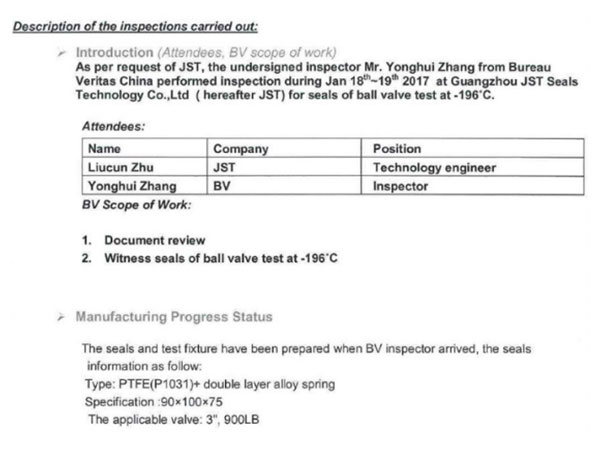
 françaisfr
françaisfr
 françaisfr
françaisfrChoisir des joints pour une vanne cryogénique
Choisir le bon joint pour les vannes cryogéniques est essentiel pour garantir des performances fiables dans des environnements à températures extrêmement basses. Voici un guide détaillé pour vous aider à prendre une décision éclairée :

Facteurs clés à prendre en compte :
1 : Plage de température de fonctionnement
Les vannes cryogéniques fonctionnent généralement à des températures aussi basses que -196°C (-320°F) pour l'azote liquide ou même plus basses pour l'hélium liquide. Assurez-vous que le matériau du joint conserve son intégrité et sa flexibilité à ces températures.
2 : Compatibilité chimique
Le matériau du joint doit résister à la dégradation causée par les fluides tels que le gaz naturel liquéfié (GNL), l'oxygène, l'azote, l'hélium ou l'hydrogène.
3 : Type de joint
Choisissez entre des joints dynamiques (pour les pièces mobiles) et statiques en fonction de l'application. Les joints dynamiques nécessitent une flexibilité et une résistance à l’usure plus élevées.
4 : Pressions nominales
Les joints doivent supporter les pressions de fonctionnement tout en maintenant une étanchéité parfaite.
5 : Normes réglementaires et de sécurité
Assurez-vous que les joints répondent aux normes pertinentes telles que ISO, ASME ou aux certifications spécifiques pour le service d'oxygène.
6 : Emplacement du joint
Différents emplacements utiliseront différents modèles de joints.
Matériaux recommandés :
1 : PTFE (Polytétrafluoroéthylène)
Avantages : Excellente résistance chimique, faible frottement et stabilité aux températures cryogéniques.
Limitations : Faible élasticité, nécessitant anneaux d'appui ou conceptions spécifiques pour maintenir l'étanchéité
JST possède une riche expérience dans la conception de joints de vanne cryogéniques.
BV a été témoin de tout le processus de test.

Nouveau blog
© droits dauteur: 2026 Guangzhou JST Seals Technology Co., Ltd. Tous les droits sont réservés.
Numériser vers WeChat
